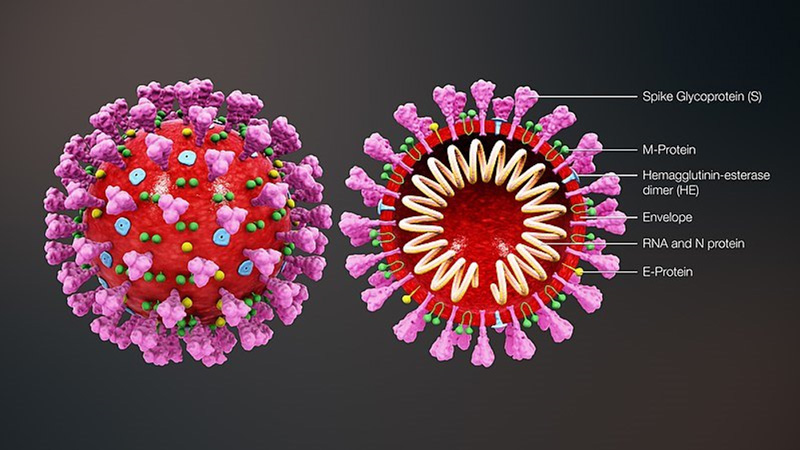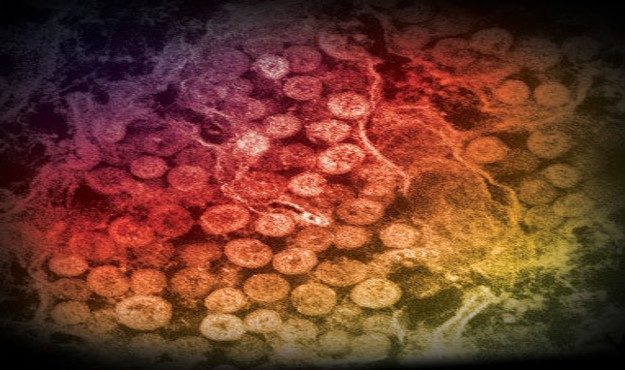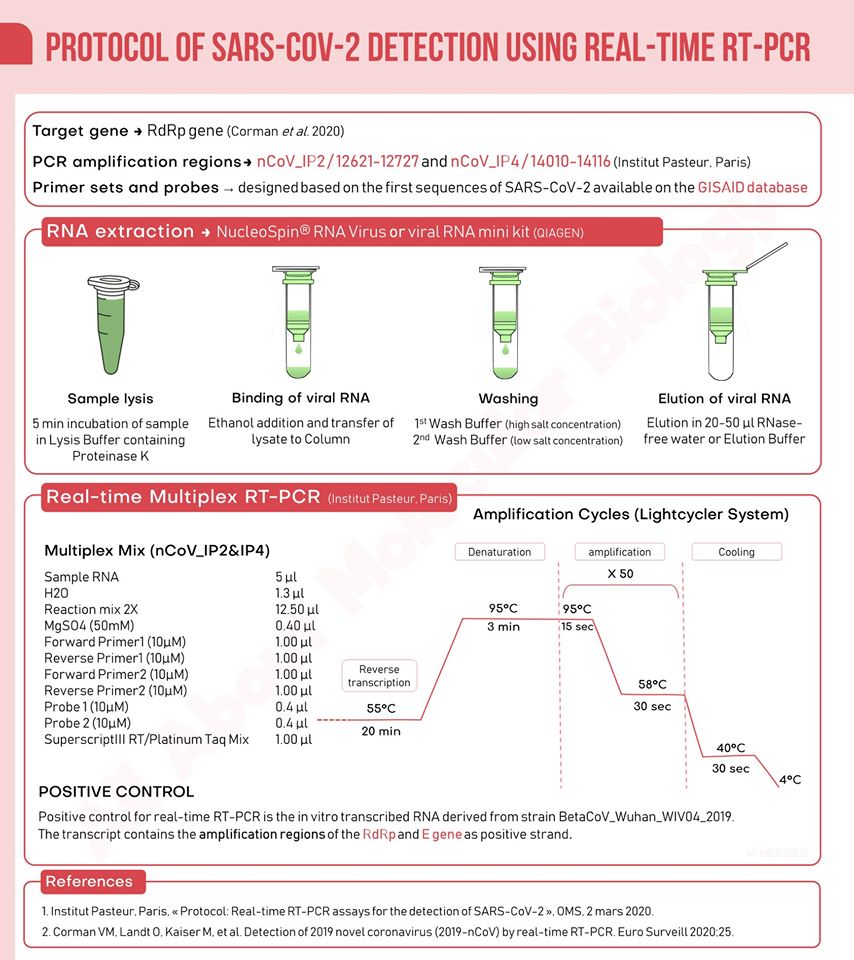
Novel Coronavirus (2019-nCoV) has become a major threat to the world and has become a fatal disease in humans. Disease caused by a new coronavirus called “2019-nCoV” is named Coronavirus disease 2019 and abbreviated as “COVID-19”. It is a respiratory disease caused by a novel (new) coronavirus that was first detected in China and has now been detected in almost 70 locations internationally, including the United States. The virus has also been named “SARS-CoV-2”.
In only China, COVID-19 has caused more than 2400 deaths and approximately 78,000 people have been infected with this deadly virus. The numbers are still increasing day by day. A total of 33 countries are affected by it and their number is increasing with the passage of time. The estimated rate of fatality is 3.13%.
Information about reported cases and recovered individuals from 2019-nCoV infection
The following table shows the number of cases of 2019-nCoV up to 23 February 2020.
A live update on the recent number of COVID-19 cases throughout the world, total deaths, total recovered cases, and the case-fatality rate is updated here on an hourly basis:
| Country name | Total reported cases | Total recovered individuals |
| Australia | 22 | 11 |
| Belgium | 1 | 1 |
| Cambodia | 1 | 1 |
| Canada | 9 | 3 |
| China | 76,936 | 22,888 |
| Diamond Princess | 634 | 1 |
| Egypt | 1 | 1 |
| Finland | 1 | 1 |
| France | 12 | 10 |
| Germany | 16 | 14 |
| Hong Kong | 70 | 11 |
| India | 3 | 3 |
| Iran | 29 | – |
| Israel | 1 | – |
| Italy | 79 | 2 |
| Japan | 135 | 22 |
| Macao | 10 | 6 |
| Malaysia | 22 | 17 |
| Nepal | 1 | 1 |
| Philippines | 3 | 2 |
| Russia | 2 | 2 |
| S. Korea | 556 | 18 |
| Singapore | 89 | 49 |
| Spain | 2 | 2 |
| Sri Lanka | 1 | 1 |
| Sweden | 1 | – |
| Taiwan | 26 | 2 |
| Thailand | 35 | 20 |
| U.A.E. | 13 | 3 |
| U.K. | 9 | 8 |
| USA | 35 | 6 |
| Vietnam | 16 | 15 |
The above table clearly shows the threat to people, especially in China.
Description of the virus 2019-nCoV
Coronaviruses belong to the family Coronavirinae and the order Nidovirals. The coronavirus genome is a single-stranded (+ss RNA) with 5’-cap structure and 3’-poly-A tail. There are four genera of the family including alphacoronavirus, betacoronavirus, gammacoronavirus & delta coronavirus. Birds including chicken are infected by gammacoronavirus & Mammals and Birds are infected by delta coronavirus. Alpha and beta ones infect humans, pigs, and cats.
Coronaviruses belong to a large family of viruses causing illness from slight infection to much adverse condition of the individuals infected from it. Coronavirus includes the Middle East respiratory syndrome (MERS) and Severe acute respiratory syndrome (SARS). Novel coronavirus 2019-nCoV is a new strain of virus having no example of such critical conditions of individuals in the past.
This virus is of zoonotic nature, and transmission occurs between animals and humans. A recent case of transmission from humans to a pet dog has also been reported in Hong Kong. Research has shown that the transmission of MERS-CoV occurs from camels to humans and SARS-CoV occurs from cats to humans.
The name of Coronavirus emanates from its structural properties as every virion is surrounded by the crown-like structures. There are peplomers of viral spikes originating from the envelope proteins.
The list of important pathogenic Coronaviruses in different hosts.
| Virus | Category | Host | Indications |
| Human CoV-229E | α | Human (Homo sapiens) | Light respiratory tract contamination. |
| Human CoV-NL63 | α | Human (Homo sapiens) | Light respiratory tract contamination. |
| PRCV/ISU-1 | α | Swine | Light respiratory tract contamination. |
| TGEV/PUR46-MAD | α | Swine | Loose motions, with 100% mortality in swine less than 2 weeks old. |
| PEDV/ZJU-G1-2013 | α | Swine | Acute watery diarrhea. |
| SeACoV-CH/GD-01 | α | Swine | Severe and acute diarrhea and acute vomiting. |
| Canine CoV/TU336/F/2008 | α | Canine | Light clinical signs, loose motions |
| Camel alphacoronavirus isolate camel/Riyadh | α | Dromedary | No symptom |
| Feline infectious peritonitis virus | α | Feline | High temperature, angiitis, and serositis with or without outflow. |
| Human CoV-HLU1 | β | Humans (Homo sapiens) | Pneumonia |
| Human CoV-OC43 | β | Humans (Homo sapiens) | Light respiratory tract contaminations. |
| SARS-CoV | β | Human (Homo sapiens) | Severe acute respiratory disorders, 10% mortality rate |
| MERS-CoV | β | Human (Homo sapiens) | Severe acute respiratory disorders., 37% mortality rate |
| Bovine CoV/ENT | β | Cattle | Loose motions |
| Equine CoV/Obihiro12-1 | β | Horse | High temperature, loss of appetite, reduction in WBCs. |
| MHV-A59 | β | Mice | Acute pneumonia and severe lung wounds. |
| Beluga Whale CoV/SW1 | γ | Gallus gallus | Severe respiratory abnormalities. |
| IBV | γ | Gallus gallus | Severe respiratory distress. |
| Bulbul coronavirus HKU11 | δ | Nightingale | Respiratory disease (obtained from the respiratory tract of dead wild birds) |
| Sparrow coronavirus HKU17 | δ | Dunnock | Respiratory disease (obtained from the respiratory tract of dead wild birds) |


2019-nCoV replication sites
This virus affects the portions of the small intestine. The villi of the intestine are damaged by it. The ability of the intestine to generate new cells remains normal, but the intestine cannot absorb the required substances. The main location of the virus for replication is in the cells of the epithelia of the respiratory tract. Approximately 33.3 % of the cells of epithelia are involved in the replication of this virus. Domestic animals are also at risk as this virus causes abnormalities in the respiratory, reproductive and gastrointestinal tracts of the animals.
Signs and symptoms of COVID-2019
- Fever, cough, and breathing difficulties.
- Running nose and throat becomes sore.
- Many cases clearly show the dysfunction of the important organs of the body.
- There is a reduction of WBCs (White blood cells) in the infected individual.
- Few strains also cause diarrhea.
- The persons with depressed immunity are at higher risk for this disease.
- Antibiotics have no role in the treatment of this disease as it is caused by the virus.
- In severe cases, it leads to pneumonia, kidney failure, and even death.
- Infected humans produce airborne droplets from oral and nasal secretions, and these droplets can cause the spread of disease.
The health of animals, playing an important role in the country’s economy and growth in all regions of the world, is also at risk.
Detection of the 2019-nCoV infection
New kits are being made by the CDC (Centre for disease control, USA) for testing the patients of coronavirus. The test kit is called “centers for disease control and prevention (CDC) novel coronavirus real-time reverse transcriptase (RT)-PCR diagnostic panel”. It uses upper and lower respiratory tract samples obtained from an infected person.

A brief protocol, using Real-time RT-PCR, for the detection of COVID-19 coronavirus ( SARS-CoV-2) is shown in the figure below. It is developed by Ecole Supérieure en Sciences Biologiques d’Oran.

Prevention and control of the 2019-nCoV infection
Infection by novel coronavirus 2019 can be prevented by the following methods:
- Avoiding close contact with the contaminated people.
- Keeping yourself at home when you are ill.
- Cleanliness of those surfaces which are regularly touched.
- Covering your eyes, nose, and mouth.
- Don’t spit in the areas where people’s interaction is present.
- Protect yourself from stray dogs, cats, and other animals including birds.
- Never touch the contaminated waste and fluids.
- People should avoid touching the sick animals.
- Cleanliness should be maintained.
- Washing of hands before and after eating food.
- Minimum 60% of alcohol can also be used for the sanitization of hands.
- Tissues used during the sneeze should be properly discarded otherwise it will be the source of infection.
- Hygienic conditions of home, office and other related places should be properly regularized.
- Use boiled water.
- Never use uncooked food items & always make sure that food is properly cooked.
- Always make sure to eat HALAL food.
- Always use meat, milk, and the organs of the animal’s body with proper care and management.
- Regular washing of hands should be practiced for at least 20 seconds.
- Always use a face mask with proper care while going outside.
- Persons working on animal farms should be regularly examined.
- People with a weak immune system should take care of their health as they are at high risk for this deadly coronavirus.
- Keep the distance of a minimum of 3 feet from the individual who is suffering from this disease.
- Experienced and trained staff should be kept in animal farms.
- Patients with coronavirus should be kept in isolation.
- Personal protective equipment (PPE) should be worn by the doctor while attending the patients.
- Guests visiting nCov patients should never be allowed to enter directly to the patient’s room, rather try to use audio or video call.
- If you feel uncomfortable, report to a medical doctor.
Treatment options
Currently, there is no satisfactory treatment for the disease caused by 2019-nCoV. Many scientists are currently working to find the possible treatment, but still, no confirmed treatment is available. There is no clearly defined antiviral therapy, but supportive therapy can help to minimize the signs and symptoms caused by 2019-nCoV.
Author: Gohar Khadim, Department of Pathobiology, Faculty of Veterinary Sciences, Bahauddin Zakariya University, Multan, Pakistan.
excellent
Brilliant effort sir